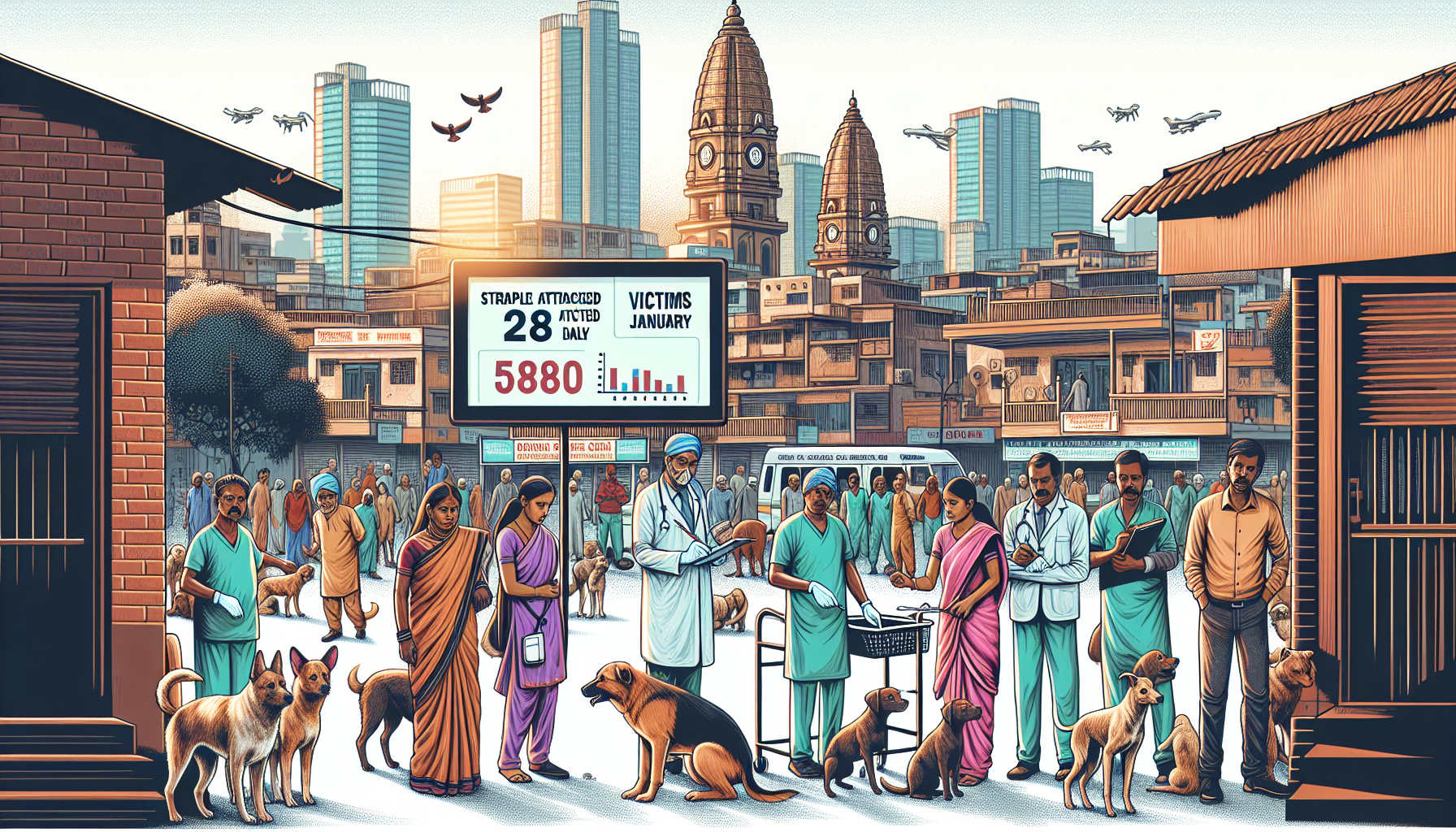- Empty cart.
- Continue Shopping
Nagpur Faces Rising Stray Dog Attacks: 28 Incidents Daily – Stray Dog Attacks

Stray Dog Attacks :
Nagpur Faces Rising Stray Dog Attacks: 28 Incidents Daily
As the calendar turns another page, residents of Nagpur are increasingly finding themselves on high alert. The city, known for its bustling streets and warm climate, is now grappling with a growing peril: the menace of stray dog attacks. Recent data reveals a staggering average of 28 people getting attacked daily, amounting to 5,880 victims since the beginning of the year.
Understanding the Scope of the Problem
Stray dogs are a common sight in many Indian cities, but the situation in Nagpur has reached an alarming level. Accumulating reports and statistical data show how pervasive and critical this problem is becoming:
- Daily Attacks: With an average of 28 incidents every day, the frequency of these Stray Dog Attacks are alarming.
- Year-to-Date Numbers: Since January, a total of 5,880 individuals have fallen victim to these Stray Dog Attacks, a clear indication that action is urgently required.
The Role of Municipal Authorities
The city’s municipal authorities are tasked with controlling the stray dog population, but the rising numbers suggest that existing strategies may be falling short. Multiple factors can be contributing to this surge in stray dog incidents:
- Lack of Effective Sterilization Programs: One of the most significant issues is the inadequacy of sterilization programs. Without effective and widespread sterilization efforts, the stray dog population will continue to grow unchecked.
- Insufficient Shelter Facilities: The city’s shelters are often overcrowded and underfunded, limiting their ability to take in more animals.
- Poor Waste Management: Uncollected garbage provides a steady food source for stray dogs, encouraging their proliferation. Improved waste management could correlate directly with a reduction in stray dog numbers.
The Public’s Role and Responsibility
While the onus primarily lies with municipal authorities, the public also plays a crucial role in managing this issue. Here’s how citizens can contribute:
- Proper Garbage Disposal: Ensure that waste is disposed of properly. Avoid leaving food scraps in open areas, which attract stray dogs.
- Reporting Aggressive Dogs: It’s essential to report aggressive or dangerous dogs to local authorities. Timely reporting can lead to faster action and prevent Stray Dog Attacks.
- Volunteering and Donations: Support local animal shelters through volunteering or donations. Resources can significantly help in tackling the Stray Dog Attacks problem.
Impacts on Public Health
The risks associated with stray dog attacks extend beyond immediate physical harm. Rabies remains a significant concern, as it is almost always fatal once symptoms appear. Nagpur’s rising stray dog incidents could facilitate the spread of this deadly disease, putting both the victims and the wider public at risk. It’s worth noting that many of the attacks have resulted in severe injuries that demand medical attention.
Steps Taken by the Authorities
The municipal corporation has initiated multiple measures to combat this escalating issue:
- Increased Sterilization Drives: There’s been a concerted push towards ramping up sterilization drives, although more effort is needed to cover a larger number of street dogs.
- Public Awareness Campaigns: Educating the public about proper waste disposal and the importance of timely reporting of stray dog incidents is another approach being explored.
- Rabies Vaccination Programs: To curb the spread of rabies, initiatives focusing on vaccinating stray dogs are being carried out, though these too need to be expanded.
Comparative Analysis
While the menace of stray dogs is escalating in Nagpur, it is not a problem unique to this city. Comparing the situation with other Indian cities can offer valuable insights:
- Mumbai: Mumbai, a city with a significantly larger population, also faces a similar menace. However, there are more developed and expansive sterilization programs in place.
- Delhi: In Delhi, NGOs and citizen initiatives have played a substantial role in controlling the stray dog population. Lessons can be learned from their collaborative approaches.
- Bangalore: Bangalore has been successful in curbing the menace with sustained vaccination and sterilization drives. Their model showcases the importance of long-term, sustained efforts.
Moving Forward: Potential Solutions
To effectively counter the stray dog menace, a multi-pronged approach is essential. Here are some potential solutions that could deliver impactful results:
- Enhancing Sterilization Programs: Allocating more resources to sterilization programs and ensuring they are conducted frequently and efficiently is crucial.
- Public-Private Partnerships: Collaborating with NGOs and private entities can bring additional expertise and resources to the table.
- Better Infrastructure: Investing in more and better-equipped animal shelters can alleviate the current overcrowding issues.
- Improving Waste Management: Implementing stricter waste management protocols can reduce the food sources available to stray dogs, thereby helping to manage their numbers.
- Education and Awareness: More robust public information campaigns can educate citizens about their role in mitigating this problem.
Conclusion
The rising stray dog attacks issue in Nagpur is a complex problem requiring immediate and sustained action. While the municipal authorities and local government play a critical role, citizen involvement is equally crucial. Combined efforts can indeed make the city safer and curb the menace effectively. To keep Nagpur’s streets safe for everyone, a cohesive and comprehensive strategy must be implemented, and time is of the essence.


















[…] on the streets is fraught with dangers for dogs. Stray dogs often face numerous challenges that jeopardize their […]